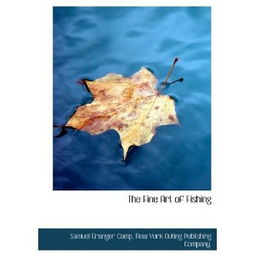
Content:
Fishing by the riverbank can be a serene and rewarding experience, especially when you master the delicate art of float adjustment. The float, or bobber, is a crucial tool in fishing that helps you detect when a fish is biting. Learning how to properly adjust your float can significantly increase your chances of success. In this article, we will delve into the essential techniques for adjusting your float, ensuring that you are ready to cast your line and enjoy a successful day out by the river.
Understanding the Float
Before we dive into the techniques, it's important to understand the float itself. A float is a buoyant object attached to the line that rises or falls with the movement of the bait. It helps you determine the depth at which the bait is being presented and alerts you when a fish takes a bite. Floats come in various shapes, sizes, and materials, each designed for different fishing conditions.
Choosing the Right Float
The first step in adjusting your float is to choose the right one for your fishing environment. Here are some factors to consider:
- Water Conditions: In clear water, use a smaller, lighter float to minimize disturbance. In murky water, a larger, more buoyant float can help you detect subtle movements.
- Fish Species: Different fish species may require different float sizes and actions. For example, bass may require a more sensitive float, while catfish might need a heavier one.
- Bait Type: The weight and buoyancy of your bait will also influence your float choice. Heavier baits may necessitate a sturdier float, while lighter baits can be suspended with a lighter float.
The Basics of Float Adjustment
Once you have the right float, it's time to adjust it. Here are the basic steps:
- Attach the Float: Thread the line through the float's eye and tie a secure knot, such as an improved clinch knot or a blood knot.
- Add Weight: Attach a swivel or a lead weight to the line above the float. The weight should be enough to keep the float afloat but not so heavy that it pulls the bait down too quickly.
- Set the Depth: Decide on the depth at which you want to fish. This will depend on the species you're targeting and the conditions of the water. Adjust the float accordingly. If you're fishing in deeper water, you may need to add more weight to lower the float.
- Balance the Float: Ensure that the float is balanced so that it stands upright when not in motion. This allows you to see any slight movements that indicate a fish is biting.
Advanced Float Adjustment Techniques
Once you've mastered the basics, you can explore more advanced techniques to improve your fishing experience:
- Tuning the Float: Adjust the position of the float on the line to change the depth at which the bait is presented. A higher float position will present the bait closer to the surface, while a lower position will reach deeper waters.
- Sensitivity Adjustment: The more sensitive your float, the better you can detect subtle bites. To increase sensitivity, you can use a smaller float or add a smaller weight above the float.
- Wind and Current Considerations: When fishing in windy or fast-flowing water, adjust the float to account for the additional resistance. You may need to add more weight or a stiffer float to maintain the desired depth.
- Using a Sliding Float: For certain techniques, such as bottom fishing or fly fishing, a sliding float can be more effective. This type of float moves up and down the line as you retrieve, allowing you to cover more ground and trigger bites.
Final Tips
- Practice Makes Perfect: Spend time practicing your float adjustment techniques on land before heading out to the river.
- Observe and Adapt: Pay attention to the water conditions and the behavior of the fish. Be prepared to make adjustments on the fly.
- Use a Quality Line: A good quality line will help you maintain the desired tension and sensitivity in your float setup.
By mastering the art of float adjustment, you'll be well on your way to becoming a proficient riverbank angler. Remember, the key to success lies in understanding the water, the fish, and the equipment at your disposal. With patience and practice, you'll soon be reeling in the catch of your dreams. Happy fishing!












